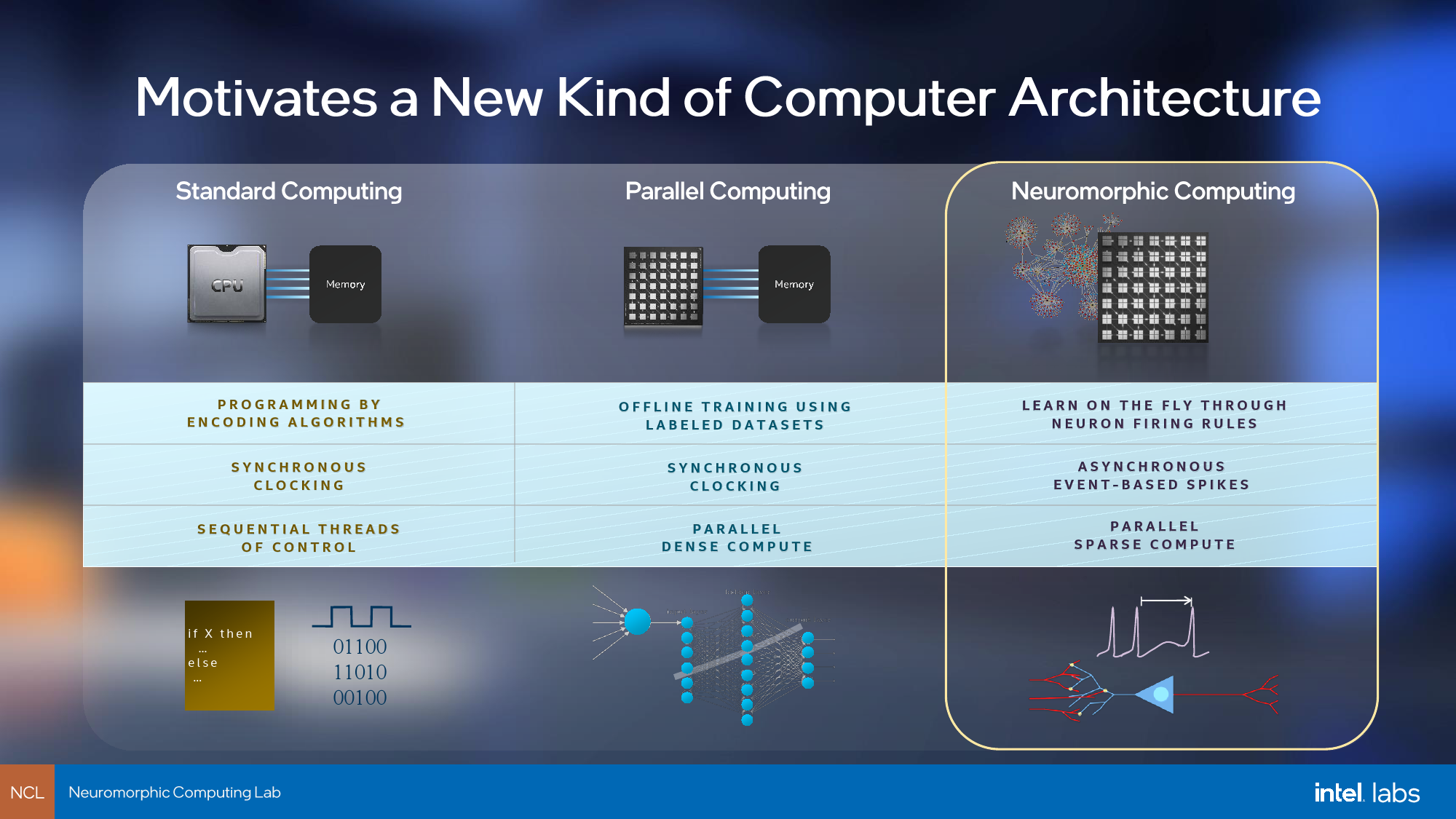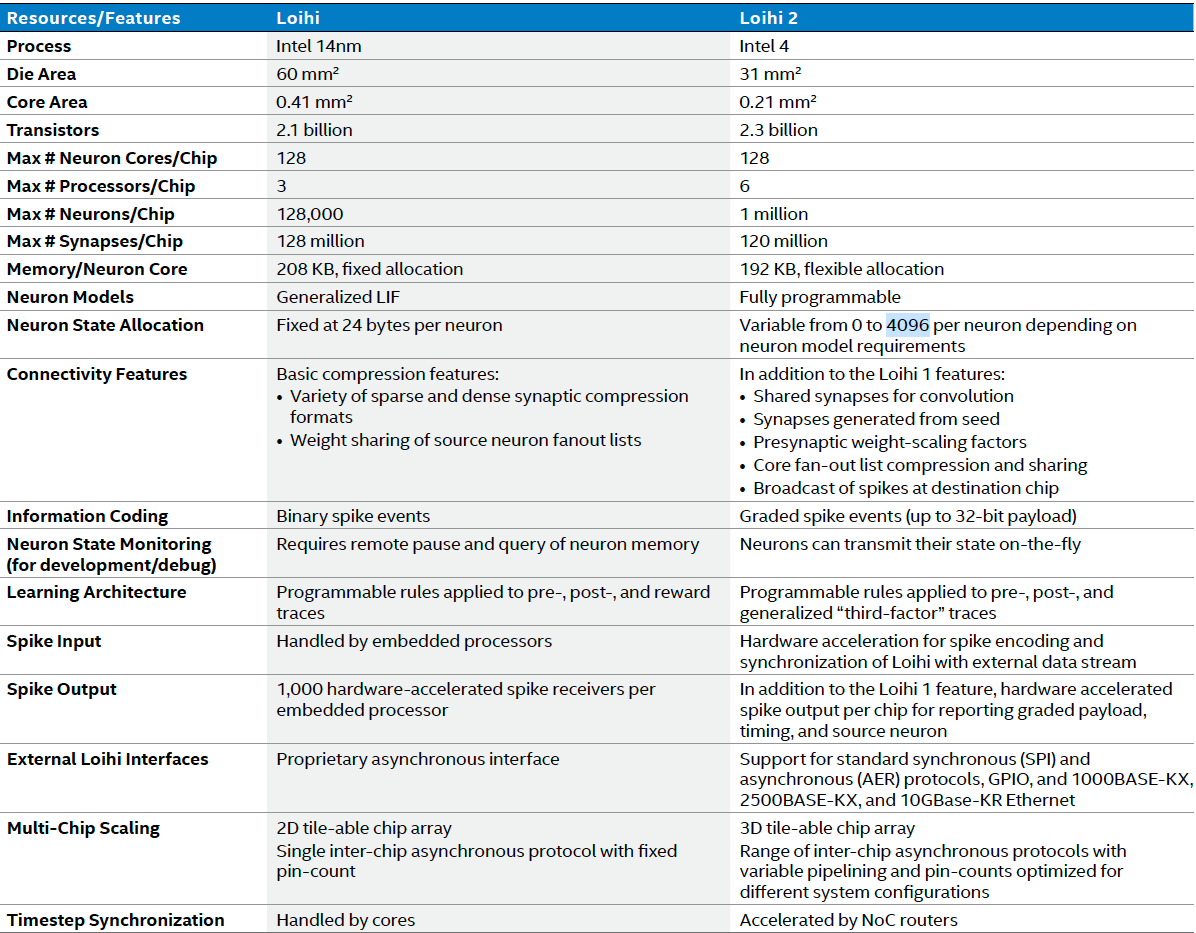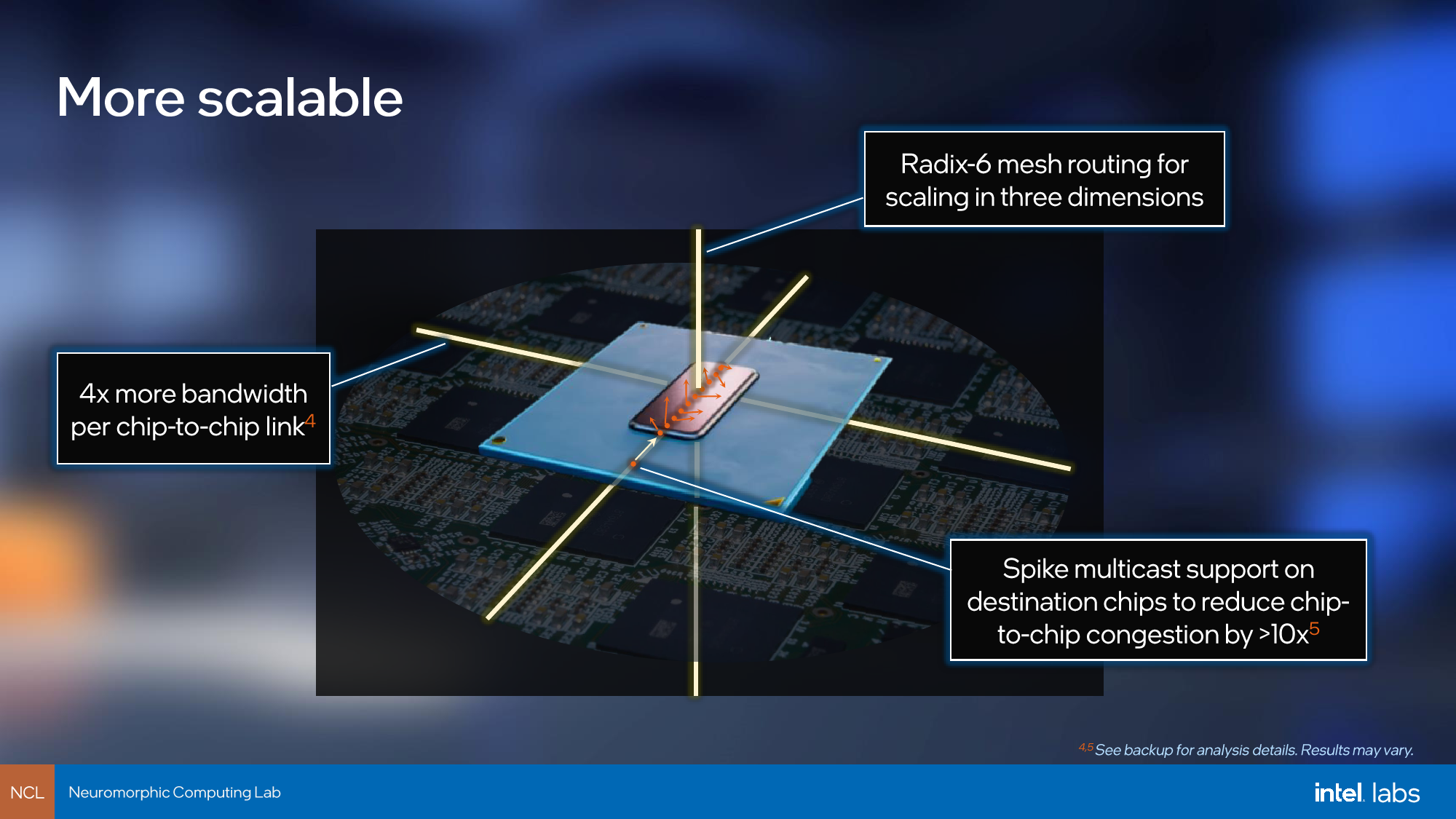Intel Reveals 4nm Loihi 2 Neuromorphic Research Chip
Intel unveils its first Intel 4 EUV chip.
The brain is perhaps nature's most complex and perfect invention. To mimic it in silicon, Intel will use its next-generation Intel 4 technology that relies on extreme ultraviolet (EUV) lithography, the most sophisticated technology for chip manufacturing invented by humanity, to create the Loihi 2 processor.
Modern artificial intelligence (AI) software and hardware largely uses offline training and requires significant amounts of power, yet cannot learn on the fly. Neuromorphic computing architectures promise to address power consumption and enable new features such as automatic abstraction, fast generalization, and on-the-fly learning, something that general-purpose or parallel computing architectures cannot provide within reasonable power budgets. Loihi is Intel's series of neuromorphic processors designed to mimic a brain.
The original Loihi was announced in 2018, it was made using the proven 14nm node and featured 128,000 neurons and synapses. With its successor, Intel goes a lot further.
The new Loihi 2 chip integrates up to 1 million neurons that can provide up to 10 times faster processing than the original Loihi. The Loihi 2 not only brings in higher performance but also features a considerably more flexible architecture, which will open doors to new types of neuromorphic applications.
The Loihi 2 uses fully programmable neurons that can be allocated up to 4096 states depending on the model (up from 24) and organizes them into 128 neuromorphic cores connected by a network-on-chip (NoC) that enables communication in the form of spike messages. Each core has its own 192KB of SRAM (i.e., about 25MB of SRAM) with programmable partitioning to further improve flexibility and programmability of the processor as well as improve utilization of core memory.

Further enhancements of the Loihi 2 architecture include support for three-factor learning rules and better synaptic (internal interconnections) compression to enable faster internal data exchange. It is also noteworthy that Loihi 2 has parallel off-chip interfaces (that support the same types of compression as internal synapses) that can be used to extend an on-chip mesh network across multiple physical chips to build an extremely capable neuromorphic computer system. Meanwhile, to simplify the integration of Loihi 2 into conventional systems, the chip has 10GbE, GPIO, and SPI interfaces.
The new Loihi 2 chip also features a 31 mm2 die size and packs 2.3 billion transistors, which means that it offers 15 times greater neuron density compared to the original Loihi because it is made using the company's pre-production Intel 4 process technology that takes advantage of EUV lithography. We would refrain from making assumptions about the transistor density Intel is looking at with its I4 node, but a 15 times greater neuron density over the company's 14 nm node is pretty impressive. While the company didn't announce plans to sell Loihi 2 in mass quantities any time soon, it still says that this is the first Intel 4-based chip 'released for external use,' which could point to the status of Intel's I4 node at the moment.
Get Tom's Hardware's best news and in-depth reviews, straight to your inbox.
Intel will undoubtedly use the experience obtained with the production of the Loihi 2 in polishing off its Intel 4 fabrication technology alongside data it gets by making experimental chips.
Right now, interested parties from the Intel Neuromorphic Research Community (INRC) can access working Loihi 2 hardware from Intel's cloud. The chip giant offers a single-chip Oheo Gulch system (powered by a card) for early evaluation now and plans to offer an eight-chip Kapoho Point system soon.

Anton Shilov is a contributing writer at Tom’s Hardware. Over the past couple of decades, he has covered everything from CPUs and GPUs to supercomputers and from modern process technologies and latest fab tools to high-tech industry trends.




